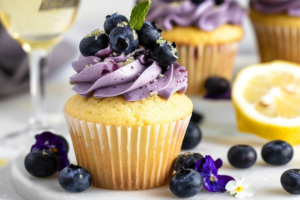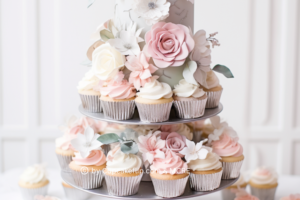Oh, the wonderful world of flavors! It’s where magic happens in the kitchen, especially when we’re talking about cakes and cupcakes. But let’s get one thing straight – flavor isn’t just about tossing in a pinch of this or a dash of that and expecting miracles. It’s an art form—a dance of taste sensations that, when done right, can turn a simple treat into an unforgettable experience. So, let’s chat about how flavors work, using cakes and cupcakes as our delicious examples, and why more isn’t always better.
Flavor: It’s All About the Mix
Think about it: adding just salt to rice does give it a bit of a kick, but that’s a rare solo act in the vast play of culinary arts. Now, sprinkle some salt over crispy, golden fries, and boom—you’ve got yourself a flavor explosion. But why? Because here, salt is mingling with the tastes left by the frying oil, creating a symphony of savory delight. It’s all about finding the right flavor buddies to hang out together.
The Secret Behind Great Flavor Combinations
Let’s get into the nitty-gritty. Crafting the perfect cupcake isn’t about following a recipe to the letter. It’s about understanding the flavors you’re working with and how they play off each other. Ever wondered why some carrot cakes taste too much like a veggie patch, while others don’t quite whisper “carrot” enough? It’s all in the balance of flavors.
Consider the classics: chocolate and vanilla, lemon and blueberry, peanut butter and jelly. These are time-tested duos that work beautifully in cupcakes because they balance each other out. Chocolate adds richness to the light, creamy essence of vanilla. The tartness of lemon lifts the sweet, subtle flavor of blueberries. Peanut butter’s savory depth finds its perfect match in the sweet fruitiness of jelly.
Understanding Taste: Beyond the Basic Four
For ages, we believed in the four basic tastes: sweet, sour, bitter, and salty. Then came a game-changer: umami. This fifth taste, meaning “a pleasant savory taste” in Japanese, opened up a whole new world of flavor possibilities. Umami is why a dash of soy sauce can transform a bland soup into a savory masterpiece. It’s the secret behind the rich, deep flavor of a perfectly ripe avocado.
Umami’s discovery was a reminder that flavor is complex and can’t always be pigeonholed. This brings us to an important point: flavor is subjective. What tastes divine to one person might be just okay to another. That’s the beauty of baking and cooking—it’s a personal journey.
More Flavor, Better? Not Necessarily
Now, onto the burning question: is more flavor always better? Imagine adding every spice from your rack into a cake. Instead of a taste sensation, you’d likely end up with a confusing mess. It’s like adding too many voices into a conversation—things get lost in the noise.
Flavor should complement, not dominate. Think of how a pinch of salt can enhance the sweetness of a caramel cupcake, or a hint of cinnamon can add warmth to a vanilla frosting. These subtle additions amplify the existing flavors without overshadowing them.
The Rule of Thumb: Less Can Be More
When in doubt, remember: less is often more. It’s better to start with a small amount of seasoning or spice and adjust as you go. Your taste buds will thank you for not overwhelming them. And if you’re experimenting with new flavor combinations, go slow. Try adding a touch of rose water to your next batch of chocolate cupcakes for a subtly floral note that doesn’t overpower the chocolatey goodness.
Wrapping It Up
At the end of the day, baking and flavoring are about exploration and expression. There’s no one-size-fits-all rule here because every palate is unique. Whether you’re a seasoned baker or just starting out, trust your instincts, and don’t be afraid to play with flavors. Who knows? Your next cupcake could be the talk of the town. Just remember, in the world of flavors, balance is key, and sometimes, a little goes a long way.





